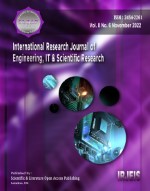Analysis of non domestic water needs in the clean water supply in Badung Regency
Keywords:
Badung regency, clean water supply, domestic water needs, non-domestic water needs, tourismAbstract
The need for clean water is generally divided into two groups, namely domestic water needs and non-domestic water needs. Non-domestic water needs are water needs other than for household purposes such as for education, industry, tourism, social and others. In general, the determination of non-domestic water demand is estimated to be around 20-25% of the total domestic water demand. Badung Regency has characteristics as the main tourist area in Bali as evidenced by the existence of 33 tourist destinations, both cultural tourism, natural tourism, artificial tourism and youth tourism. With these characteristics, this study emphasizes the analysis of non-domestic water needs in the tourism sector. The research was conducted by analyzing various factors related to the need for clean water in the tourism sector such as hotel accommodation, tourism support facilities and the number of tourism objects available. The results of this analysis are compared with domestic water needs according to the existing population. The analysis shows that non-domestic water demand for tourism accommodation (hotels, villas and condominium hotels) is 186.76 liters / second, for tourism objects is 7.64 liters / second, restaurants and bars is 24.21 liters / second.
Downloads
References
Archana, A., Datta, C., & Tiwari, P. (2016). Impact of environmental degradation on human health. International research journal of management, IT and social sciences, 3(1), 1-6.
Asian Develepment Bank (ADB). 2016. Indonesia : Country Water Assesment. Mandaluyong City, Philipines
Badung Regency Tourism Office, 2019. Badung regency tourism data. Mangupura : Badung Regency Tourism Office
Bali Penida River Council.2017 Master Plan for Development of Bali Raw Water. Denpasar : Bali Penida River Council
Bouchekima, B. (2003). A solar desalination plant for domestic water needs in arid areas of South Algeria. Desalination, 153(1-3), 65-69. https://doi.org/10.1016/S0011-9164(02)01094-9
Central Bureau of Statistics of The Province of Bali.2018. Bali in 2018. Denpasar : Central Bureau of Statistics of The Province of Bali
Chambers, C. W., & Clarke, N. A. (1966). Control of bacteria in nondomestic water supplies. Advances in Applied Microbiology, 8, 105-143. https://doi.org/10.1016/S0065-2164(08)70494-5
Hickner, M. A. (2010). Ion-containing polymers: new energy & clean water. Materials Today, 13(5), 34-41. https://doi.org/10.1016/S1369-7021(10)70082-1
Jan, F. A., Ishaq, M., Khan, S., Ihsanullah, I., Ahmad, I., & Shakirullah, M. (2010). A comparative study of human health risks via consumption of food crops grown on wastewater irrigated soil (Peshawar) and relatively clean water irrigated soil (lower Dir). Journal of hazardous materials, 179(1-3), 612-621. https://doi.org/10.1016/j.jhazmat.2010.03.047
Koop, S. H. A., Van Dorssen, A. J., & Brouwer, S. (2019). Enhancing domestic water conservation behaviour: A review of empirical studies on influencing tactics. Journal of environmental management, 247, 867-876. https://doi.org/10.1016/j.jenvman.2019.06.126
Kooy, M., Walter, C. T., & Prabaharyaka, I. (2018). Inclusive development of urban water services in Jakarta: The role of groundwater. Habitat International, 73, 109-118. https://doi.org/10.1016/j.habitatint.2016.10.006
Macedonio, F., Drioli, E., Gusev, A. A., Bardow, A., Semiat, R., & Kurihara, M. J. C. E. (2012). Efficient technologies for worldwide clean water supply. Chemical Engineering and Processing: Process Intensification, 51, 2-17. https://doi.org/10.1016/j.cep.2011.09.011
Ministry Public Work Of Indonesia, 2000. The standard of clean water needs in Indonesia. Jakarta: Ministry Public Work Of Indonesia
Regional Drinking Water Company in Badung Regency,2019. Engineering Report. Mangupura: Regional drinking water company in Badung Regency
Robles-Durazno, A., Moradpoor, N., McWhinnie, J., Russell, G., & Maneru-Marin, I. (2019). PLC memory attack detection and response in a clean water supply system. International Journal of Critical Infrastructure Protection, 26, 100300. https://doi.org/10.1016/j.ijcip.2019.05.003
Thyagaraju, N. (2016). Water pollution and its impact on environment of society. International Research Journal of Management, IT and Social Sciences, 3(5), 1-7.
Villarreal, E. L., & Dixon, A. (2005). Analysis of a rainwater collection system for domestic water supply in Ringdansen, Norrköping, Sweden. Building and Environment, 40(9), 1174-1184. https://doi.org/10.1016/j.buildenv.2004.10.018
Warren, C. (2000). The cultural and environmental politics of resort development in Bali. Case Studies. Institute for Sustainability and Technology Policy.
World Bank. 2012. Integrated Urban Water Management- Lesson And Recommendations From Regional. Washington DC :Water Partnership Program (WPP) Case Profile No.1 November 2012
Wuysang, J. E., Triweko, R. W., & Yudianto, D. (2018). Theoretical Framework of Urban Water Security In Indonesia. Journal of Civil Engineering, Science and Technology, 9(2), 7-7.
Zhang, P., Liao, Q., Yao, H., Huang, Y., Cheng, H., & Qu, L. (2019). Direct solar steam generation system for clean water production. Energy Storage Materials, 18, 429-446. https://doi.org/10.1016/j.ensm.2018.10.006
Published
How to Cite
Issue
Section
Copyright (c) 2022 International research journal of engineering, IT & scientific research

This work is licensed under a Creative Commons Attribution-NonCommercial-NoDerivatives 4.0 International License.
Articles published in the International Research Journal of Engineering, IT & Scientific research (IRJEIS) are available under Creative Commons Attribution Non-Commercial No Derivatives Licence (CC BY-NC-ND 4.0). Authors retain copyright in their work and grant IRJEIS right of first publication under CC BY-NC-ND 4.0. Users have the right to read, download, copy, distribute, print, search, or link to the full texts of articles in this journal, and to use them for any other lawful purpose.
Articles published in IRJEIS can be copied, communicated and shared in their published form for non-commercial purposes provided full attribution is given to the author and the journal. Authors are able to enter into separate, additional contractual arrangements for the non-exclusive distribution of the journal's published version of the work (e.g., post it to an institutional repository or publish it in a book), with an acknowledgment of its initial publication in this journal.
This copyright notice applies to articles published in IRJEIS volumes 6 onwards. Please read about the copyright notices for previous volumes under Journal History.















